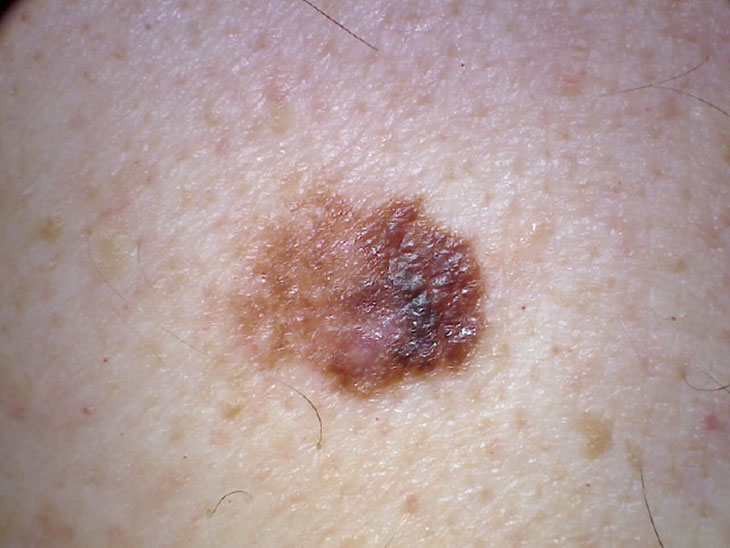6. Irregularly-bordered Moles

Even dermatologists with years of study and practice have difficulty distinguishing between moles and melanoma. Having said that, there are warning indicators that can help distinguish a benign (non-cancerous) skin lesion from a potentially hazardous skin cancer. The signs might be minor at times, but they can be enough to have you tested and identified while the cancer is still curable. According to specialists, uneven, jagged, or scalloped mole borders are a warning indication of skin cancer. They also add that the appearance of skin malignancies and atypical moles can vary widely. To put it another way, a malignant mole may not tick all of the warning-sign boxes. The most essential thing is to notice anything new, altering, or strange on your skin and have it evaluated by a specialist as soon as possible. This melanoma tumor has an irregular, jagged, and notched border. The color looks to “bleed” around the borders as well. One of the unmistakable indicators of melanoma is an uneven border. Moles, on the other hand, have smoother, more equal borders. It is worth mentioning that around 20% to 30% of melanomas originate from existing moles, whereas 70% to 80% develop on seemingly normal skin. Melanoma tumors, in any scenario, have jagged, irregular borders that distinguish them from other benign skin disorders.
A “pigmented lesion” is a catch-all phrase for regular moles, sun freckles, and aging spots (lentigines). While most pigmented lesions do not progress to cancer, if you have a large number of lesions or odd lesions, you should see a dermatologist on a frequent basis for a thorough skin check. A change in a worrisome lesion may cause a skin biopsy (removing a sample of the mole for further examination under a microscope), which can help establish if a lesion is non-cancerous (benign), melanoma, or another kind of skin cancer. Do not attempt to remove a mole on your own, even if you are using an over-the-counter treatment that burns, freezes, or employs lasers to eliminate skin tags, moles, and freckles. You might not only have an infection, but you could also unintentionally remove melanoma without proper supervision. Skin cancer may spread to other organs if not detected early, and identifying an atypical mole is one method to do so.



